At its most basic, bread's just flour, water, salt, and yeast. Count 'em: That's just four ingredients. And while a lot can go wrong—cue fears of yeast and bread hard as a hockey puck—so much can go right, too.
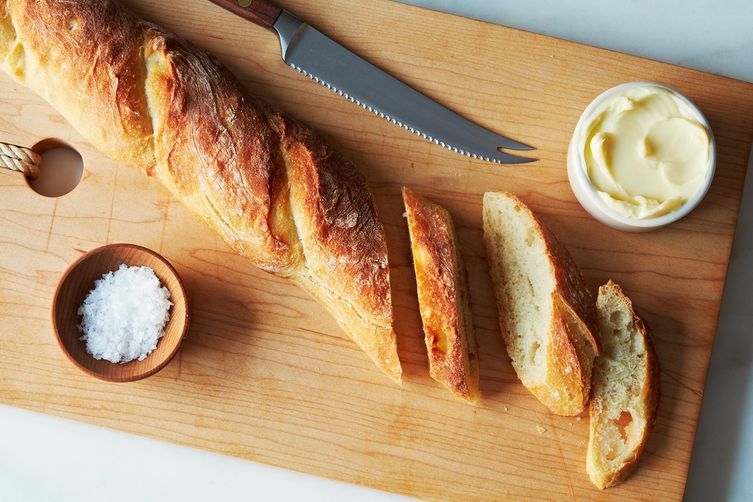
Like other simple-yet-not-simple things (we see you, pasta), we consulted the experts for advice on how to make bread better. Cornbread gets cornier, baguettes more beautiful, and popovers more poppin'. It's time to go with the grain and up your bread game.
Here are 10 bread tips we learned from cookbooks:
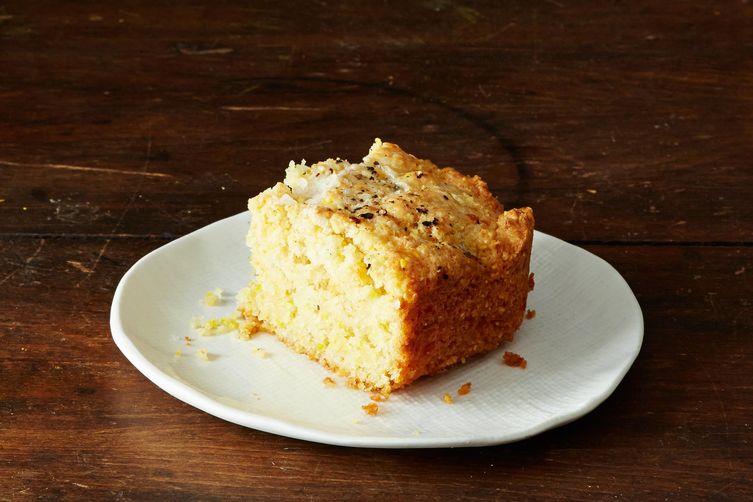
Tip: Add par-cooked polenta to cornbread.
Good to the Grain by Kim Boyce
“One day, faced with a large amount of cooked polenta, I thought to stir some into a batch of cornbread for dinner. It was the best pan of cornbread I’d ever made, moist, with a nice grainy chew.”
How-to: If you own Boyce’s book, lucky you! This particular cornbread recipe is swirled and glazed with honey butter. Regardless of what recipe you’re working with, sprinkle in about 1 cup coarse polenta or cornmeal and a pinch or two of salt into 3 cups of boiling water. Cook, stirring occasionally, until the polenta thickens and is creamy, about 10 minutes or so. Add 1 cup of this to whatever amount of melted butter the recipe calls for, then add the rest of your wet ingredients. Proceed with cornbread making and baking.

Tip: Up your white bread game with Dutch Crunch Topping.
Fog City Diner Cookbook by Cindy Pawlcyn
“The Dutch Crunch topping makes for a more crusty top, and adds a little sweetness to the bread. The topping should be spread on the bread with a spoon prior to the last rise.”
How-to: For four loaves, Pawlcyn combines 1 tablespoon sugar, one 4-ounce package active dry yeast, 3/4 cup rice flour, 1 teaspoon of salt, 1 tablespoon olive oil, and 1/2 cup water. Let this stand for 15 minutes before spreading onto the uncooked bread as described above.
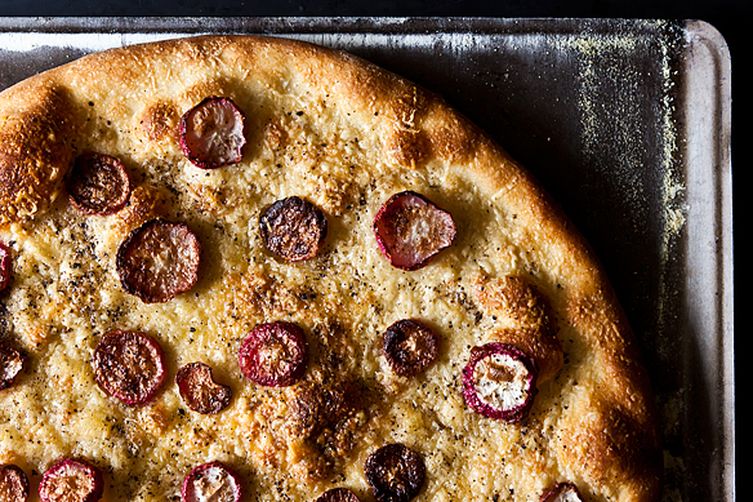
Tip: Brioche isn’t just a loaf—make “pizza” with the dough instead.
Ottolenghi by Yotam Ottolenghi and Sami Tamimi
“Hardly a pizza (but we couldn’t think of a more suitable name), this is the ultimate comfort snack. The buttery, slightly sweet brioche makes a superior base for the salty feta and sour tomatoes.”
How-to: Roll out brioche dough and cut into 3 1/2- by 4-inch rounds, about 3/4-inch thick. Allow to rise until doubled in height (1 to 2 hours). As for pizza toppings, the book’s recipe has oven-dried tomatoes flecked with dried mint, caramelized onions, feta, olive, and flat-leaf parsley leaves (for garnish), but whatever you choose to top with, do so generously as “the size of the dough will increase substantially in the oven.” Bake “pizzas” at 325° for 15 to 20 minutes.
Note: The book also includes a sweet (literally) galette recipe using brioche dough. Do as Ottolenghi does and use marscapone cream, plums, berries, and passion fruit or go your own galette filling route.
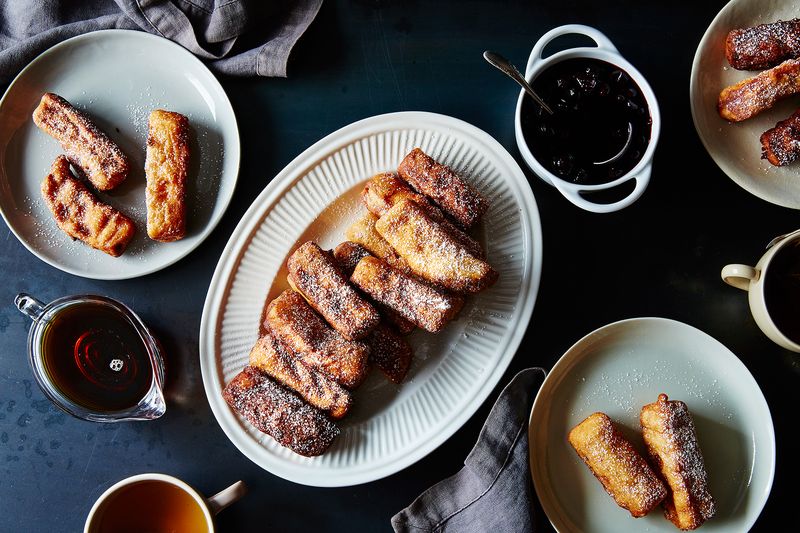
Tip: Leftover brioche or challah? Don’t just make French toast. Make French toast sticks and deep-fry them.
Family Table by Michael Romano and Karen Stabiner
“At Union Square Cafe, day-old bread is sliced and made into sweetened battered French Toast Sticks. Serve these on their own for breakfast or brunch or for dessert with ice cream. You can substitute ordinary white bread, but the result will not be as rich.”
How-to: Cut slices from day-old brioche or challah and then cut each of these into thirds to make sticks. Then, follow this recipe.
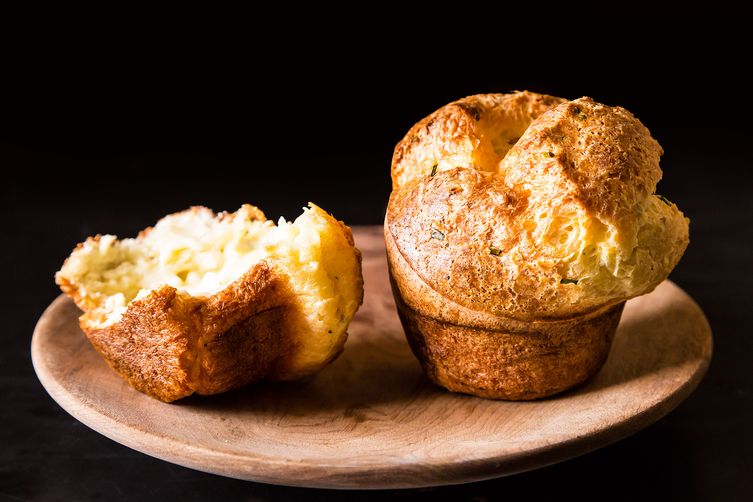
Tip: Choux paste makes poppin’ popovers.
Maximum Flavor by Aki Kamozawa and H. Alexander Talbot
“We use choux paste for this recipe because it produces delicate and airy popovers—and you can make the dough in advance. The make-ahead versatility of the popover technique is perfect for breakfast, too.”
How-to: Make choux paste (you can get crazy with add-ins—the book’s recipe uses garlic butter in place of normal butter and gruyere cheese, plus a cheese topping made with Parmigiano Reggiano, more garlic butter, flour, and salt for a “garlic bread” version). Chill the choux paste in an ice bath for 30 minutes, place in a lidded container, and refrigerate overnight. The next morning or day, proceed with popover making, using 1/2 cup of choux paste for each popover and bake until they’re fully puffed and golden brown. Serve hot, with more cheese grated over top.
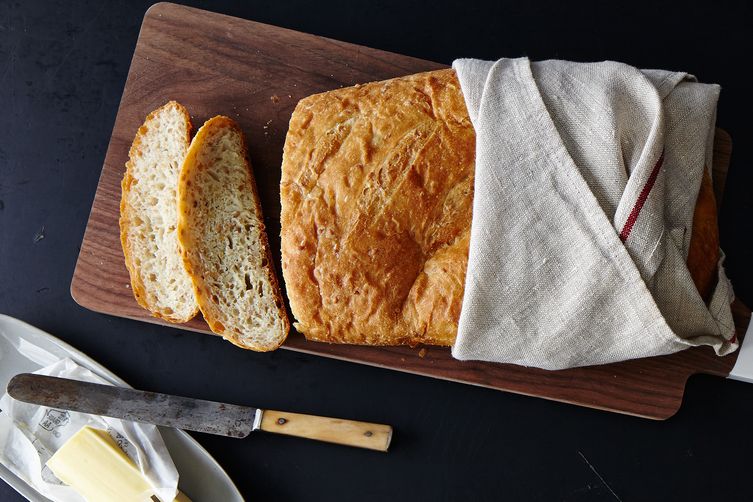
Tip: Potato water makes white bread softer.
The New Midwestern Table by Amy Thielen
“Originally, the potato water was a kind of natural leavening. When cake yeast was hard to come by, farm families made a sourdough slurry from the leftover potato water. After days of absorbing microbes and a few fresh flour feedings, it reacted kind of like yeast. Somewhere along the line they found that the milky potato water had a softening effect on the bread as well.”
How-to: Place a cubed russet potato in a saucepan with 4 cups of water to cover. Salt the water and bring to a boil. Cover and simmer until the potato cubes are very tender, about 20 minutes. Drain and reserve 3 cups of the potato water (save the potato cubes for another use). Use the potato water as as a replacement water or any other liquid in your bread dough.
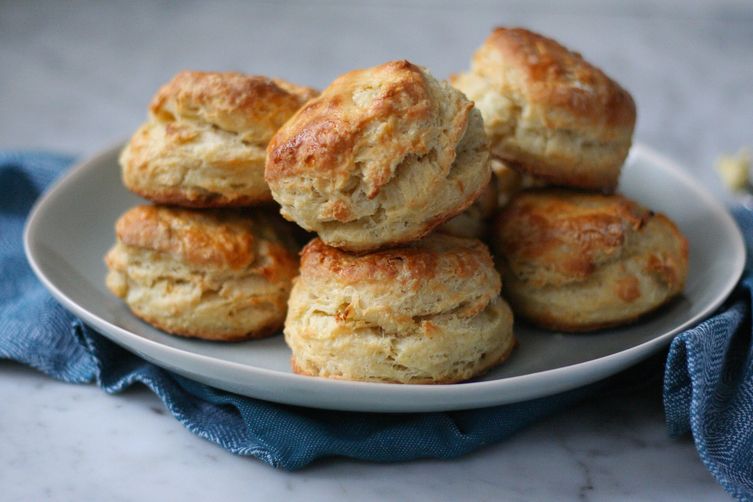
Tip: For super raised buttermilk biscuits, add yeast (and no, you won’t have to wait any longer).
Vegetarian Cooking for Everyone by Deborah Madison
“Although they contain yeast, they aren’t kneaded and they require only as much time as it take to preheat the oven. Make them small and serve them with a spot of good jam, a thin slice of gruyere cheese, or any of the flavored butters.”
How-to: Madison calls these “Angel Biscuits” and that is apt. Proof 1 envelope or 2 1/4 teaspoons of active dry yeast and mix this with your buttermilk before adding to your biscuit’s flour-butter mixture. Make biscuits as you do, rolling the dough out about 3/8 inch thick. Cut and let the biscuits rise while the oven preheats. Bake until browned.
More: Deborah Madison's essential tools for cooking vegetables.
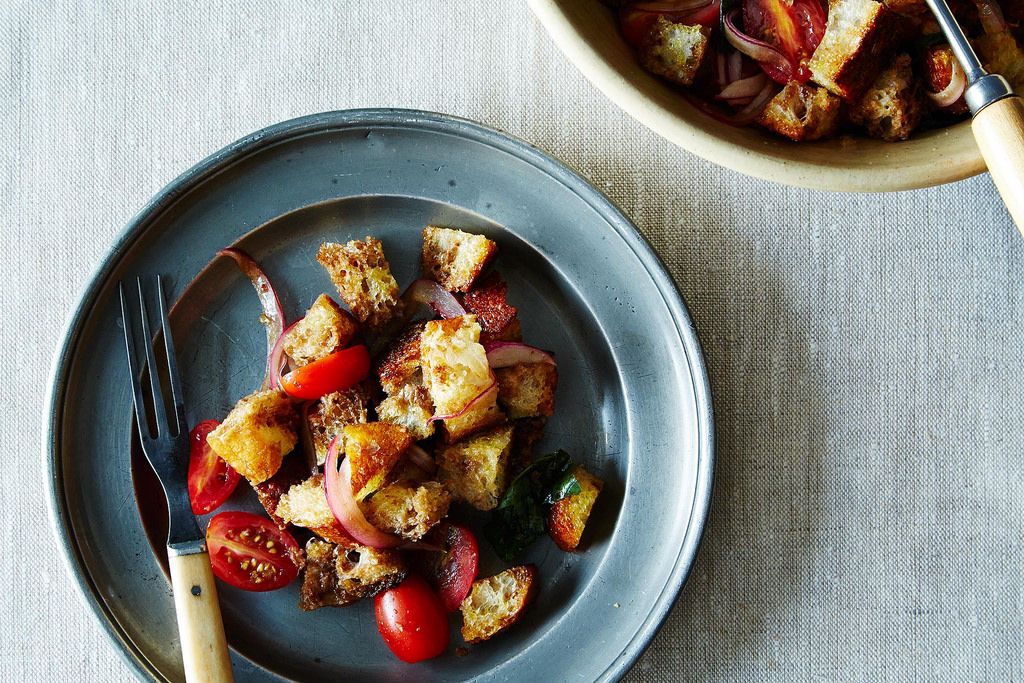
Tip: Panzanella can be sweet—literally.
Super Natural Every Day by Heidi Swanson
“The sugar-crusted, caramelized bread cubes are what make this panzanella special.”
How-to: Cut a 16-ounce loaf of day-old bread into 1-inch cubes. Melt 1/4 cup butter in a large pot, add 1/4 cup dark brown sugar (or muscavado) and a bit of salt, and stir until the sugar dissolves. Toss the bread cubes in the sugar-butter mixture until thoroughly coated and bake at 375, stirring frequently, until golden, for about 15 minutes. Halve and mash 1 cup berries to make a “dressing.” Then toss the bread with mashed berries, folding in the 1 cup more halved berries before serving. Swanson uses golden raspberries, but, as she says above, you can use lots of other fruits. Just keep in mind you’ll need about 2 cups total.
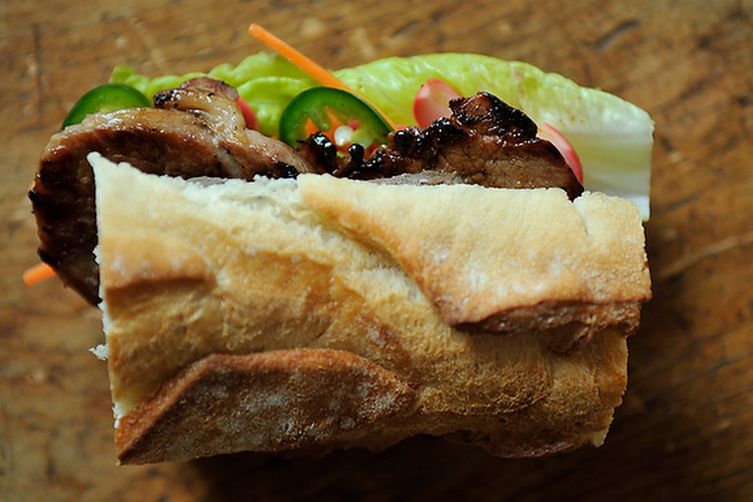
Tip: Banh mi sandwiches want their own type of baguette.
Banh Mi by Jacqueline Pham
“The banh mi sandwich can be made with any kind of long, thin loaf of bread. But if you’re reaching for the most authentic version, you might want to try to make your sandwich with a crusty, hand-made Vietnamese-style baguette. The difference is they’re made with rice flour. Count about 1/3 rice flour to 2/3 all-purpose flour. This bread is lighter, with a more crackly crust than a French baguette, because rice flour doesn’t contain gluten and doesn’t absorb water as quickly as all-purpose flour.”
How-to: Using Pham’s ratio, try substituting some rice flour for all-purpose in your baguette recipe. For about 3 1/4 cups all-purpose flour, you’ll want 1 3/4 cups rice flour. Pham also recommends halving the baguette length-wise and lightly toasting it before assembling your banh mi.
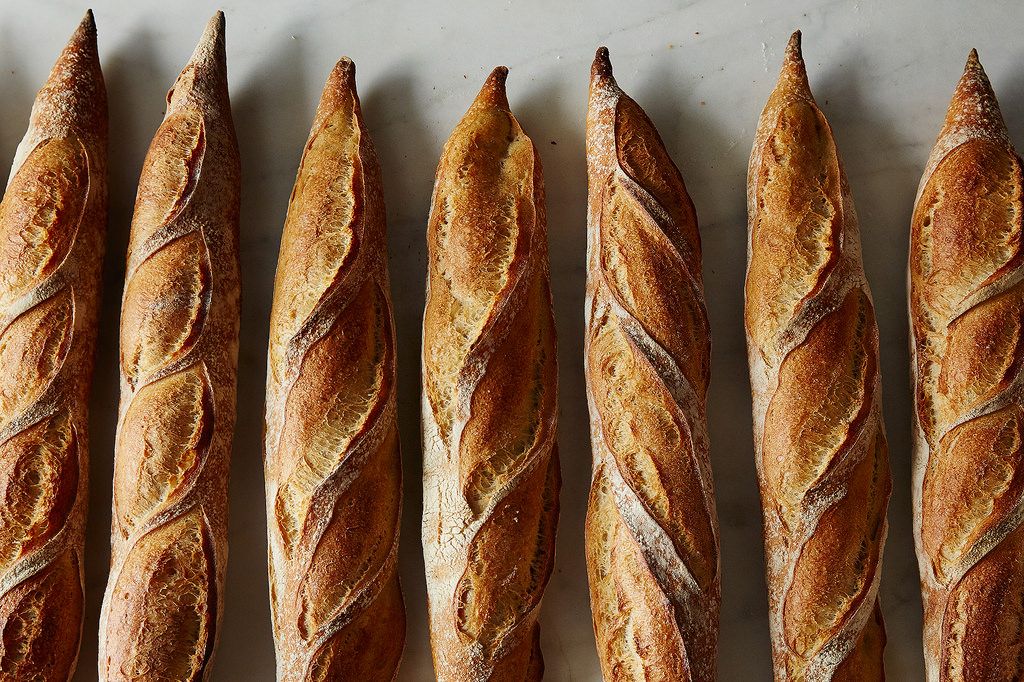
Tip: Want to make pretty bread? It’s epi-solutely possible! Just cut baguette dough into an epi.
Bouchon Bakery by Thomas Keller and Sebastien Rouxel
“Set the demi-baguette on a floured peel. Beginning 2 1/2 to 3 inches from one end of the baguette, holding a pair of sharp scissors at a 60-degree angle, make the first cut, leaving a little of the dough attached to anchor the leaf. Move the leaf to one side of the epi. Continue to the end of the epi, alternating the cuts from one side to the other."
How-to: Make baguette dough, shape the dough log, and then do as Keller says. Yes, you made that pretty bread. Bake, let cool, and tear off a leaf-like piece like you mean it.
Have a favorite bread tip? Tell us in the comments below!
Photos by James Ransom, Bobbi Lin, Erin McDowell, and Mark Weinberg












See what other Food52 readers are saying.